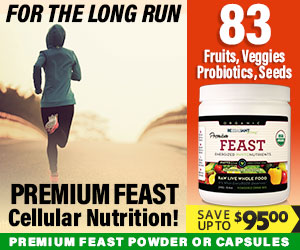- 1. Berries: Natureâs Antioxidant Powerhouses
- 2. Leafy Greens: Essential Vitamins and Minerals
- 3. Nuts and Seeds: Nutrient-Dense Snacks
- 4. Fatty Fish: Omega-3 and Vitamin D Rich
- 5. Legumes: Plant-Based Protein & Vitamins
- 6. Sweet Potatoes: Vitamin A and Fiber
- 7. Avocados: Healthy Fats and Vitamins
- 8. Mushrooms: Vitamin D and Immune Support
- 9. Citrus Fruits: Vitamin C Powerhouses
- 10. Whole Grains: B Vitamins & Fiber
1. Berries: Natureâs Antioxidant Powerhouses
Rich in Vitamins and Phytochemicals
Berries like blueberries, strawberries, raspberries, and blackberries are packed with vitamins C and K, as well as a plethora of antioxidants. These compounds help protect your cells from oxidative stress, which is linked to aging and chronic diseases. In 2025, incorporating a variety of berries into your daily diet remains one of the best ways to boost your immune function naturally.
Many studies highlight how berries can improve heart health due to their high antioxidant content. For example, research shows that regularly consuming berries can help lower LDL cholesterol levels and blood pressure, contributing to cardiovascular wellness.
Practical Tips for Including Berries in Your Diet
One simple way to enjoy berries is to add them to oatmeal, yogurt, or smoothies. Frozen berries are often more affordable and just as nutritious as fresh ones, making them a convenient choice year-round.
Consider making berry salads or healthy desserts to diversify your intake. Remember, incorporating a variety of colorful berries can optimize your intake of different phytonutrients for overall health.
2. Leafy Greens: Essential Vitamins and Minerals
Top Nutritional Leafy Vegetables
Spinach, kale, Swiss chard, and collard greens are some of the best whole food vitamin sources available. These vegetables are abundant in vitamins A, C, E, and K, as well as minerals like magnesium and calcium. For 2025, experts recommend prioritizing these greens to support bone health, immune function, and eye health.
Leafy greens are versatile and can be added to salads, soups, and smoothies. Cooking methods such as steaming or sautéing can preserve most nutrients while enhancing digestibility.
Maximizing Nutrient Absorption
Pair greens with healthy fats like olive oil or avocado to boost the absorption of fat-soluble vitamins such as A and K. Freshly prepared greens retain maximum vitamin content; avoid overcooking to prevent nutrient loss.
Incorporating leafy greens daily can significantly improve your intake of vital micronutrients, making them a staple in your 2025 diet.
3. Nuts and Seeds: Nutrient-Dense Snacks
Varieties Rich in Vitamins and Healthy Fats
Almonds, walnuts, chia seeds, and flaxseeds are excellent whole food vitamin sources, offering vitamin E, B vitamins, and essential fatty acids. These foods support brain health, reduce inflammation, and enhance skin health.
In 2025, adding nuts and seeds to your diet can help you meet daily vitamin and mineral targets, especially when used as toppings or incorporated into meals.
Practical Tips for Consumption
Consume nuts and seeds raw or dry-roasted for maximum nutrient retention. Store them properly to prevent rancidity, and consider preparing homemade trail mixes for healthy snacking.
They are also great for adding crunch to salads, cereals, or smoothiesâeasy and effective ways to increase your intake of whole food vitamin sources.
4. Fatty Fish: Omega-3 and Vitamin D Rich
Most Popular Fatty Fish Options
Salmon, mackerel, sardines, and herring are among the top whole food vitamin sources of omega-3 fatty acids and vitamin D. These nutrients are vital for brain health, reducing inflammation, and supporting bone strength.
In 2025, consuming these fish twice a week is recommended to maintain optimal vitamin D levels naturally, especially in regions with limited sunlight exposure.
Health Benefits and Preparation Tips
Grilling, baking, or poaching are healthy cooking methods that preserve nutrients. Incorporate fatty fish into your weekly meal plan to enjoy their full health benefits without reliance on supplements.
For those who don’t consume fish, consider fortified foods or supplements, but strive to include whole food sources whenever possible.
5. Legumes: Plant-Based Protein & Vitamins
Types of Legumes Rich in Nutrients
Lentils, chickpeas, black beans, and kidney beans are excellent whole food vitamin sources rich in folate, B vitamins, iron, and fiber. They play a crucial role in supporting digestion, energy metabolism, and cellular health.
In 2025, legumes are a staple in plant-based diets and are increasingly recognized for their comprehensive nutrient profile and health benefits.
Incorporation Ideas
Use legumes in soups, salads, or as main dishes like veggie burgers. Soaking and proper cooking enhance nutrient bioavailability and reduce antinutrients.
Regular consumption of legumes can boost your overall intake of essential vitamins from whole food sources, making them a dietary essential.
6. Sweet Potatoes: Vitamin A and Fiber
Key Nutrients in Sweet Potatoes
Sweet potatoes are a remarkable whole food vitamin source with high levels of beta-carotene, which the body converts into vitamin A. They are also rich in fiber, vitamins C and B6, aiding immune function and digestive health.
For 2025, including sweet potatoes in your diet supports skin health, vision, and overall immunity.
Healthy Preparation Methods
Baking, boiling, or roasting preserves their nutrient content. Adding cinnamon or herbs can enhance flavor and make them more enjoyable as part of your meals.
Get an Amazing Discount on the Best Certified Organic Whole Food Supplement!
They are versatile, filling, and a nourishing choice for balanced nutrition.
7. Avocados: Healthy Fats and Vitamins
Nutritional Profile of Avocados
Avocados are one of the richest whole food vitamin sources of monounsaturated fats, vitamin E, vitamin K, and B vitamins. These nutrients support heart health, skin vitality, and nutrient absorption.
In 2025, incorporating avocados into salads, spreads, or smoothies can enhance dietary nutrient density and provide sustained energy.
Tips for Including Avocados
Choose ripe avocados for maximum flavor and nutrient retention. Use them as a topping or as a base for creamy dressings and dips.
Eating raw or in healthy recipes helps retain their full vitamin and healthy fat content, making them a vital part of your whole food vitamin sources.
8. Mushrooms: Vitamin D and Immune Support
Varieties Rich in Vitamin D
Portobello, shiitake, maitake, and button mushrooms are unique in being whole food vitamin sources of vitamin D, especially when exposed to sunlight or UV light during growth.
Mushrooms can boost immunity and help in maintaining healthy bones, in tandem with other nutrient sources.
Using Mushrooms in Your Diet
Sauté, roast, or add mushrooms to soups and stews for flavor and nutrition. In 2025, mushroom supplements are also popular, but whole foods remain the best source of nutrients.
Consuming a variety of mushrooms regularly can enhance your vitamin D intake naturally.
9. Citrus Fruits: Vitamin C Powerhouses
Top Citrus Options
Oranges, grapefruits, lemons, and limes are classic whole food vitamin sources of vitamin C. They strengthen immunity, support skin health, and act as antioxidants.
In 2025, fresh citrus fruits are more accessible and affordable, making them a go-to for boosting your vitamin C intake naturally.
Best Ways to Enjoy Citrus
Enjoy them sliced, as juice, or in salads. Keep in mind that vitamin C is water-soluble and sensitive to heat, so consume raw or minimally processed for maximum benefit.
Adding citrus to your diet regularly can help you reach your daily vitamin C goals with whole food sources.
10. Whole Grains: B Vitamins & Fiber
Popular Whole Grain Choices
Quinoa, brown rice, oats, barley, and whole wheat are among the top whole food vitamin sources of B vitamins, especially niacin, thiamine, and folate. They are essential for energy production and maintaining nervous system health.
For 2025, choosing minimally processed grains supports sustainable health and energy levels throughout your day.
Tips for Incorporation
Use whole grains as staples in your mealsâsuch as oatmeal in the morning or brown rice with dinner. Cooking with whole grains enhances nutrient retention and keeps you full longer.
Switching to whole grain options is one of the easiest ways to improve your intake of vital vitamins from whole food sources.
FAQs
Q1. What are the best whole food vitamin sources for immune health?
Berries, citrus fruits, mushrooms, and leafy greens are excellent whole food vitamin sources that support immune function naturally in 2025.
Q2. How can I incorporate more whole food vitamin sources into my diet?
Start by adding a variety of fruits, vegetables, whole grains, nuts, and fish into your meals daily. Meal prep, smoothies, and salads are practical ways to increase intake.
Q3. Are whole food vitamin sources better than supplements?
Generally, yes. Whole food vitamin sources provide a complex array of nutrients and phytochemicals that supplements often lack, making them more beneficial for long-term health.
Q4. Why are whole food vitamin sources important in 2025?
As research continually underscores the benefits of natural nutrients, relying on whole food vitamin sources is key to sustainable, balanced nutrition in 2025 and beyond.
Conclusion
Incorporating a diverse range of the top 10 whole food vitamin sources discussed in this guide is essential for optimal health in 2025. These foods not only provide vital vitamins and minerals but also offer antioxidants and other phytonutrients that support your body’s natural defenses. Remember, focusing on whole food sources ensures you get the maximum nutrients in their most absorbable and beneficial form. Make it a goal this year to prioritize these foods and enjoy the myriad health benefits they provide!




